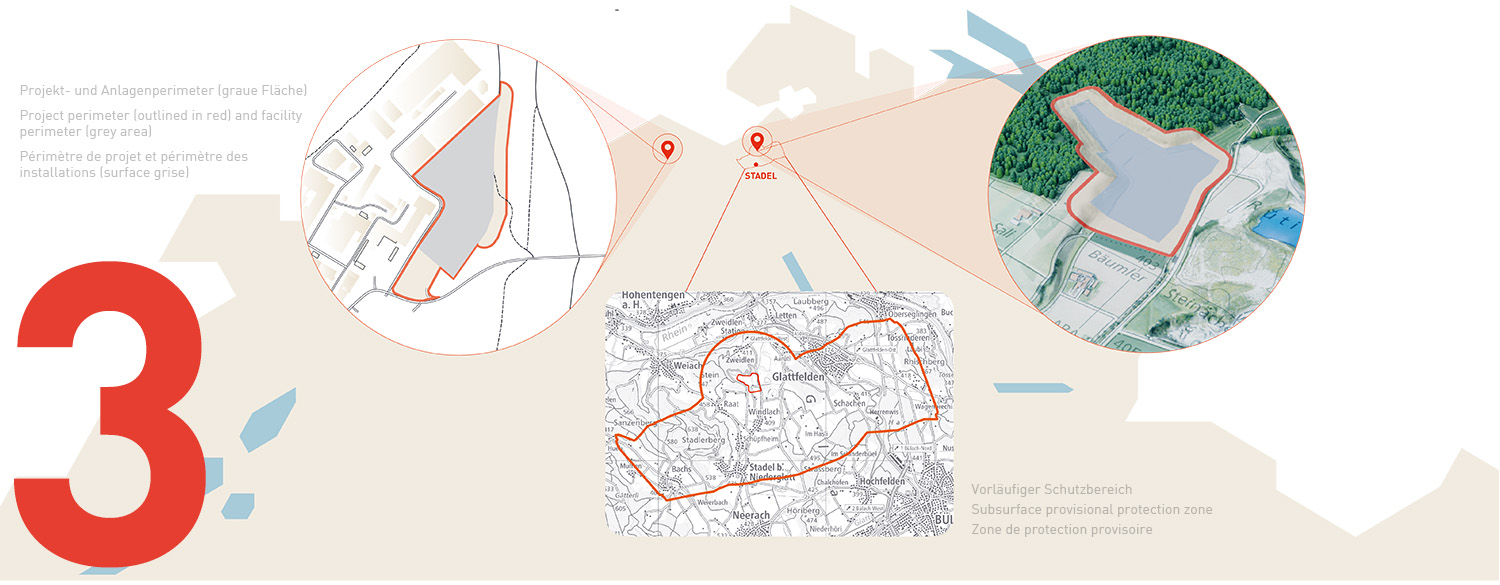A general licence is the first step in realising infrastructure projects of national importance, such as nuclear facilities, on a political level. To this end, the submitted documentation must include the basic features of the planned project. Anyone intending to construct or operate a nuclear facility requires a general licence issued by the Federal Council (Art. 12, KEG).
The Nuclear Energy Act (Art. 3 KEG) defines nuclear facilities not only as installations that produce nuclear materials or radioactive waste, but also those that are used to process and store nuclear products.
In particular, the general licence specifies the purpose and site of the installation (Art. 14, KEG). As the waste encapsulation plant is planned at a different site and will serve a different purpose than a deep geological repository, the Swiss Federal Office of Energy requires two general licences for the management of Switzerland’s radioactive waste.
Encapsulation of L/ILW at the Zwilag interim storage facility has already been authorised, which is why the general licence application only refers to the encapsulation plant for spent fuel assemblies (BEVA). A safety case demonstrating the long-term, postclosure safety of the nuclear facilities must be provided in order to obtain a general licence (Art.13, KEG).
The basis for this is a provisional project which, for the deep geological repository, goes beyond the required level of detail needed for the general licence to properly assess safety-relevant issues and environmental impacts.
In addition to the site and purpose, the general licence specifies the basic features of the project, i.e. the approximate dimensions and locations of the most important structures. To this end, a project perimeter is defined at the surface. Inside this perimeter is the facility perimeter, which will house the most important structures.
The general licence will define the approximate ground area and maximum height above the natural terrain of these structures. The provisional facilities are used to analyse the spatial requirements as well as the procedures during construction and operation over the entire duration of the project and to ensure that the facility perimeter will be sufficiently large to house all the required structures. The project perimeter serves to secure the facility perimeter from impacts from its surroundings and, in the case of the deep geological repository, to better integrate it into the landscape.
To protect the deep geological repository from human intrusion, the general licence defines a provisional protection zone for the subsurface (Art. 14, KEG). Later, the accesses and the underground repository installations (test areas, pilot repositories and main repositories) will be constructed in this zone. With the project perimeter and the provisional protection zone, the general licence defines maximum spatial dimensions that must be adhered to in the subsequent procedural steps.
SUBSIDIARY ORGANISATIONS
As the licence holder has to be specified for each general licence, Nagra has founded two subsidiaries for the further planning, construction and operation of the two facilities. Nagra gTL AG, responsible for the construction and operation of the deep geological repository, will apply for the general licence for the repository, and Nagra BEVA AG, responsible for the construction and operation of the encapsulation plant, will apply for the general licence for the encapsulation plant.
Any reference to “Nagra” in the application documentation refers either to Nagra gTL AG or Nagra BEVA AG, depending on the respective application. These subsidiary organisations will submit their general licence applications to the Federal Council.

